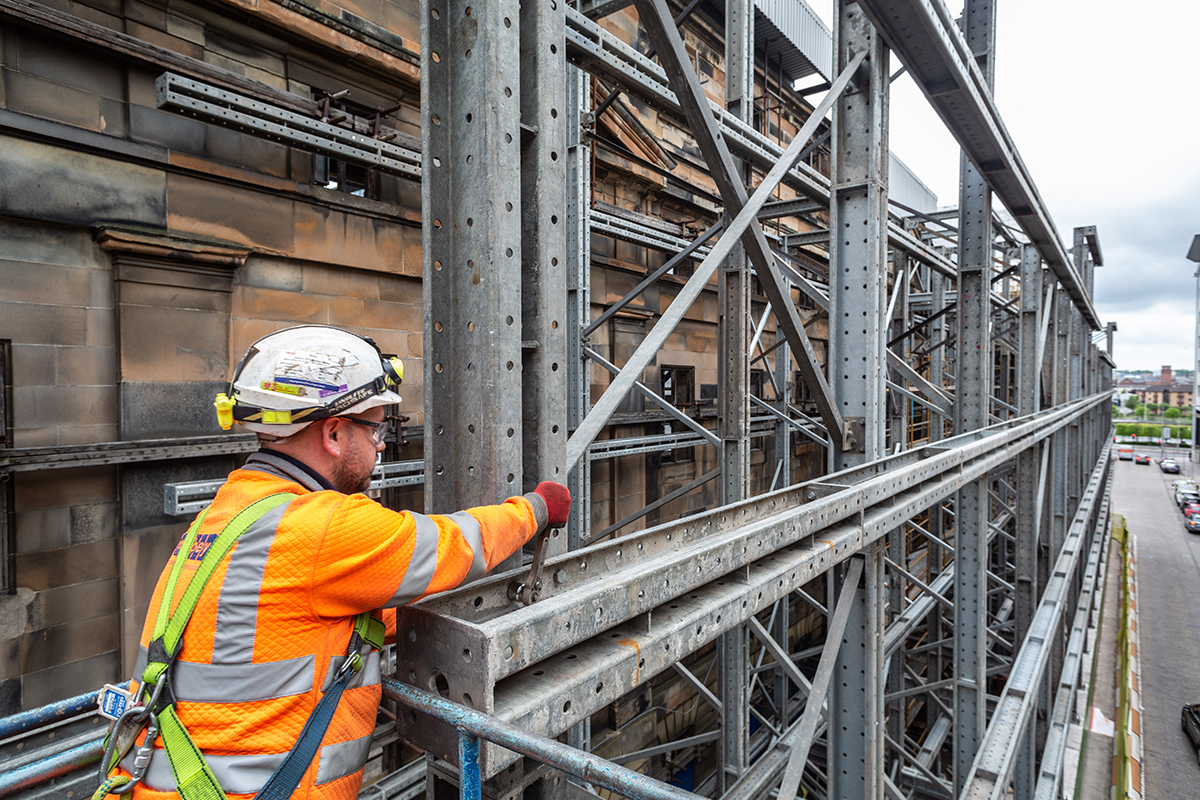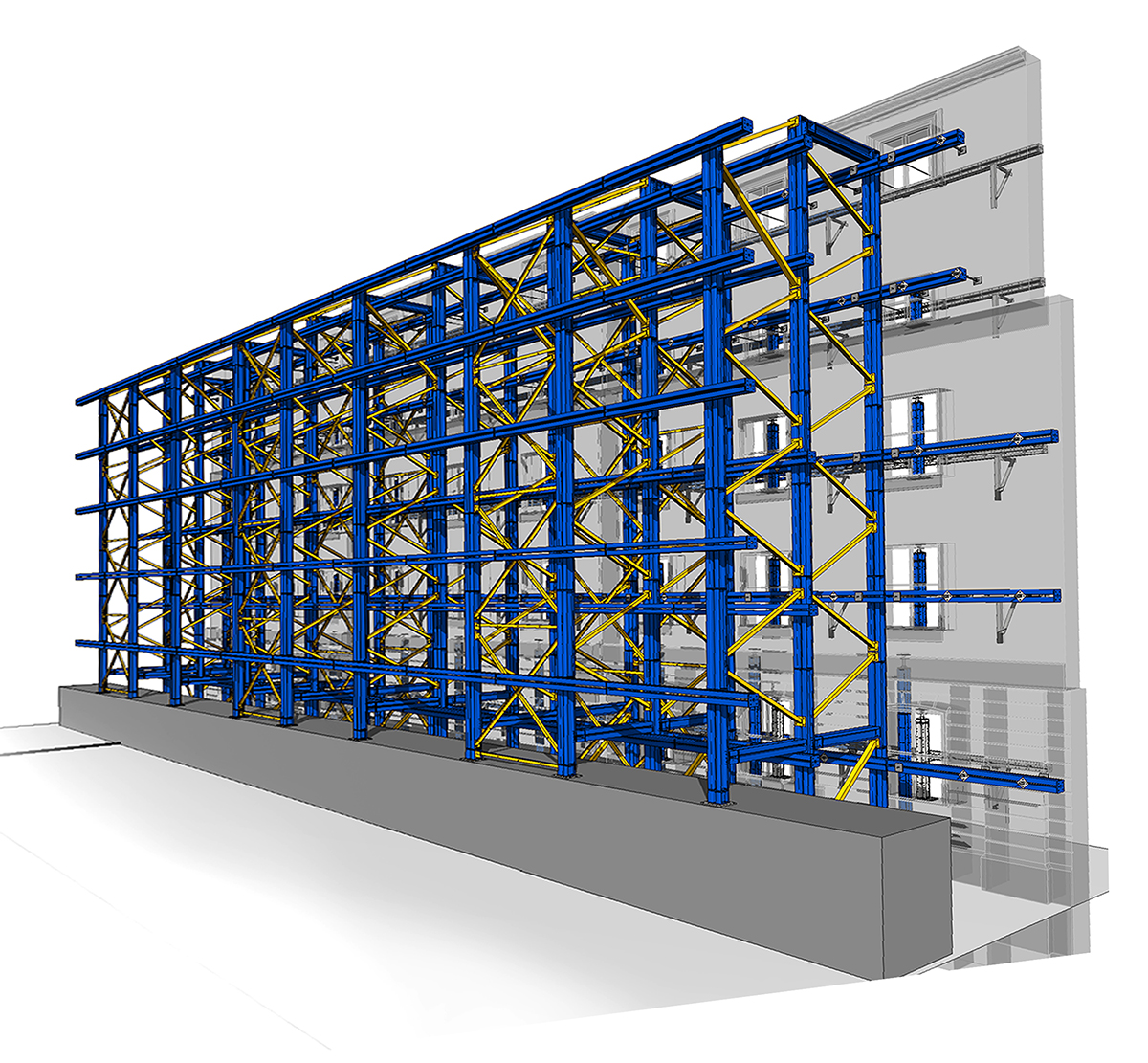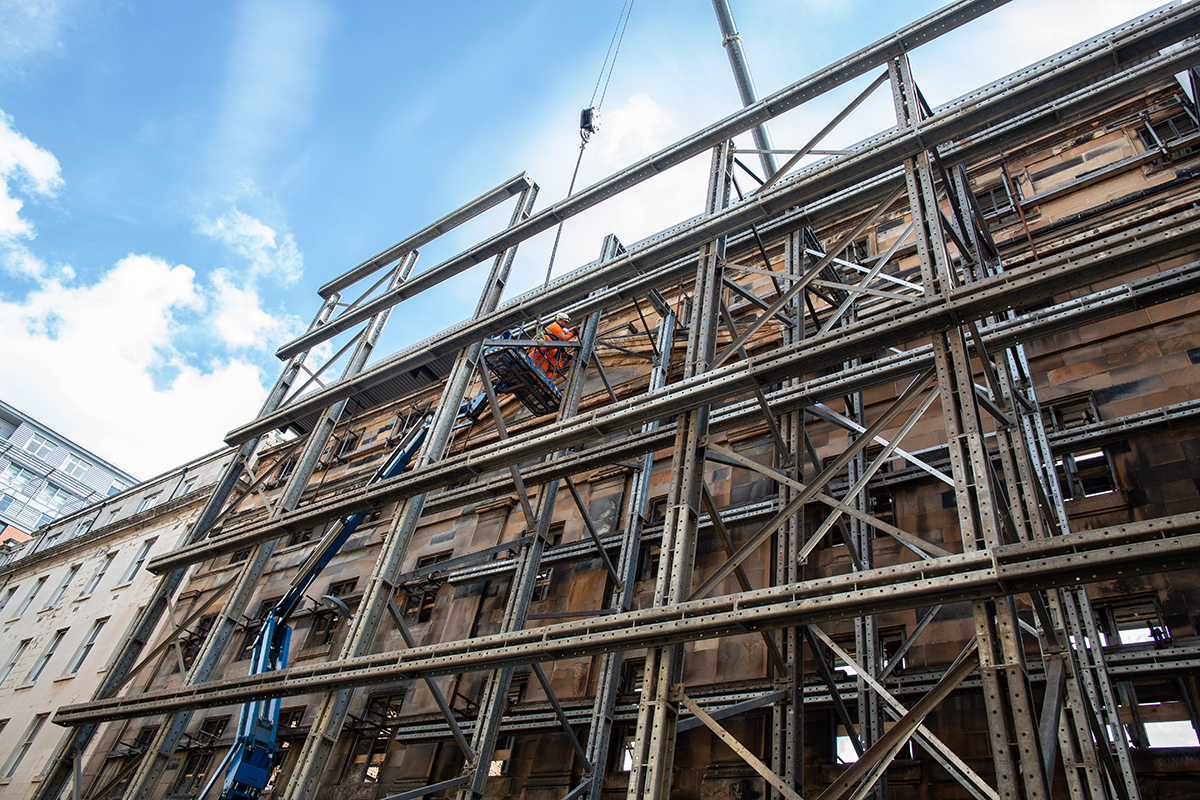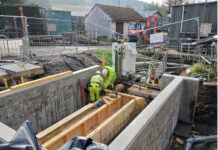
In construction, temporary and permanent works often go hand in hand. Given this, perfect planning and coordination between each of the project stages, from initial design scheme to supply of equipment and installation, is critical. Here, Billy McCormick, head of regional engineering for Scotland and the North of England at Mabey Hire, explores how considering temporary works at the beginning can deliver benefits both for the contractor and overall project delivery.
DESPITE being temporary in nature, temporary works can have a very real and long-lasting impact on the success of the overall project. In fact, they could be better referred to as ‘enabling works’, with the success of the permanent often depending heavily on the success of the temporary. However, that said, there is still the potential for a construction project’s temporary works to be somewhat overlooked at the initial stages. In fact, in the context of the RIBA Plan of Works (PoW), temporary works are often not brought in on a project until as late as stage four (design), or even stage five (build). Unsurprisingly, being involved so late on in the construction sequence has the potential to cause considerable issues, both for a project’s budget and its timeline.
Instead, what if temporary works were incorporated at the earlier Strategy or Brief stages of a project? Here, the temporary and permanent could be considered together as one, enabling a truly connected and constructible process.
Efficient scheme design
Ultimately, the early consideration of a project’s temporary works enables a more efficient and better-informed scheme design to be created, helping to facilitate a higher level of coordination between the temporary and permanent works disciplines. In turn, this can reduce the likelihood of structural clashes occurring on site, allowing project teams the opportunity to detect and resolve any potential issues early on.
This more proactive way of working, as opposed to reactive, is key, especially when you consider that the cost of delays and rework can increase rapidly once you reach site.
Considering a project’s temporary works early on in the construction sequence can also provide benefits at the initial tender stage, enabling the contractor to offer a more accurate and informed bid, one which accounts for both the temporary and the permanent.

Building Information Modelling
Of course, you cannot talk about the design of temporary works without mentioning Building Information Modelling (BIM). Employing digital engineering on a temporary works project can be hugely valuable – value that only increases with early contractor engagement. BIM is known for its highly detailed and information-rich 3D models, enhanced levels of visibility and improved accuracy – all things that can only prove beneficial when dealing with a project’s temporary works.
As well as offering the assurance that the scheme design is constructible, such 3D visibility can also contribute to a more streamlined installation process. With the potential for construction teams to be able to see what they’re installing before they reach the site, and even potentially ‘walk through’ the site (thanks to developments in Virtual Reality technology), it enables teams to better plan and prepare, contributing to a more seamless and safer install process.

Coordination throughout
As we have already mentioned, coordination between the permanent and the temporary works is critical if the project is to be delivered successfully, on time and within budget. However, coordination throughout the temporary works stages (from design through to on-site installation) is perhaps just as key. Otherwise, it stands the risk of any efficiencies gained at the design stage being lost.
One way to ensure this level of coordination is maintained is to look for a temporary works specialist with a complete, end-to-end service offering, providing engineering expertise at the design stage and an in-house installation team for once the project reaches site.

As well as providing additional assurances of a smooth installation process, the benefits of an in-house install team stretch beyond the construction site, offering a high level of collaboration. Having access to this practical site experience can be hugely valuable at the design stage too, with the two teams/areas working closely together and providing logistical advice and insight – for example, on whether a complex connection would be realistically feasible.
Given the critical role that temporary works can play on a construction project, it is clear that they deserve ample consideration, with early engagement contributing towards a more efficient and successful project delivery. While early consideration of a project’s temporary works is invaluable – facilitating coordination between the permanent and the temporary -, coordination between the design, supply and install stages is perhaps just as important. Here, working with a temporary works specialist with an end-to-end service offering, such as Mabey Hire, can help, enabling a more streamlined approach.











